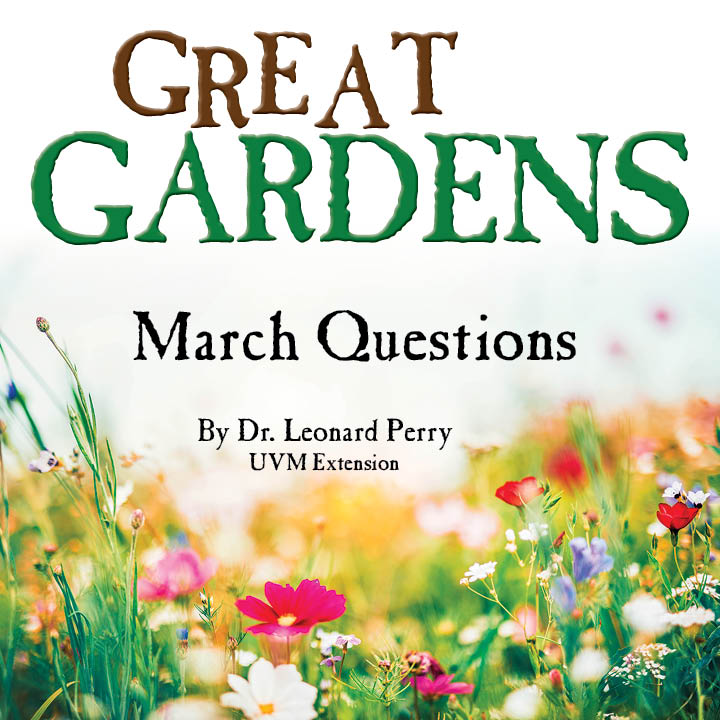GARDENING QUESTIONS YOU MAY ASK IN MARCH
Dr. Leonard Perry, Extension Professor
University of Vermont
Should I remove my mulch bed?
If you placed a winter mulch of bark, straw, shredded leaves or similar over perennials and around roses, remove it as early as possible. This is as soon as snow melts, which may be early March in warmer areas, April in the coldest areas. You can leave an inch or two around plants to provide a summer mulch for weeds.
Gardeners sometimes believe mulches should be left on, in case of late cold and frosts. When perennials and roses begin to grow, however, having them uncovered helps them acclimate or adjust more successfully to such temperatures. If left covered, they begin growing under the mulch, and produce tender growth that is much more susceptible to cold once the plants are finally uncovered.
How should I treat my Rhododendrons?
Rhododendrons, being evergreen, often have a hard time with our severe winters and end up looking pretty beat this time of year. But don’t give up, and don’t be too eager to prune heavily. They may be slow to grow after a harsh winter.
In the 2005 North Country Garden Calendar, Dr. Lois Berg Stack from the University of Maine says that bringing rhododendrons successfully through the winter depends on proper selection and care the previous season. Consult with a reliable nursery professional to select the right ones for your area. Then plant in acid, well-drained soil, with high organic content. They should receive good morning light, yet be protected from strong afternoon sun in summer.
Choose a site for rhododendrons that provides protection from late winter sun, and from drying winter winds. Use two inches of bark mulch around plants, pulling the mulch away from stems. One key is to water well in late fall, at least one inch of water a week if it doesn’t rain sufficiently. This water will help the evergreen leaves from drying out so much in winter.
When should I prune my fruit trees?
In this same calendar, Margaret Hagen from the University of New Hampshire recommends not pruning fruits if the extended forecast is for temperatures below zero degrees F. Regardless of what fruit you may be pruning, wait for three or four days after temperatures rise above ten degrees F before beginning.
Most fruits should be pruned before growth begins in spring. The exception is raspberry and blackberry brambles which should have old fruiting canes (stems) removed just after you’ve harvested the crop. March to April, even February for apples if warm enough, is a good time to prune the rest.




